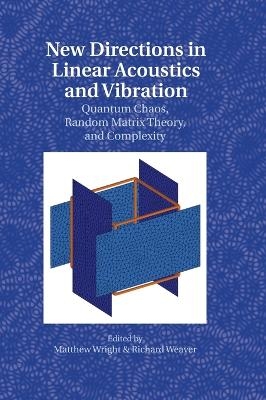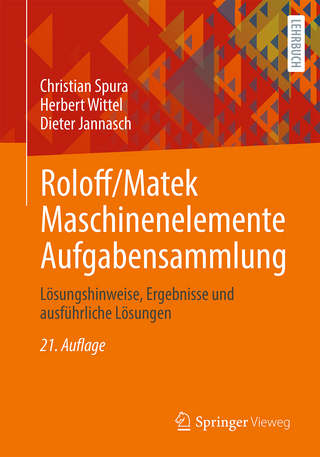
New Directions in Linear Acoustics and Vibration
Cambridge University Press (Verlag)
978-0-521-88508-9 (ISBN)
Linear acoustics was thought to be fully encapsulated in physics texts of the 1950s, but this view has been changed by developments in physics during the last four decades. There is a significant new amount of theory that can be used to address problems in linear acoustics and vibration, but only a small amount of reported work does so. This book is an attempt to bridge the gap between theoreticians and practitioners, as well as the gap between quantum and acoustic. Tutorial chapters provide introductions to each of the major aspects of the physical theory and are written using the appropriate terminology of the acoustical community. The book will act as a quick-start guide to the new methods while providing a wide-ranging introduction to the physical concepts.
Richard Weaver is a Professor of Physics at the University of Illinois at Urbana-Champaign. He received an A.B. degree in physics from Washington University in St Louis in 1971 and a Ph.D. in astrophysics from Cornell University in 1977. After postdoctoral research in elastic wave propagation and ultrasonics at Cornell, he moved to the Department of Theoretical and Applied Mechanics at the University of Illinois. His research is in stochastic linear acoustics, with applications to structural vibrations, condensed matter physics, quantum chaos, and seismology. He was elected a Fellow of the Acoustical Society of America in 1996. He received the Hetényi Award from the Society for Experimental Mechanics in 2004 and the Eötvös Award from the European Association of Geoscientists and Engineers in 2009. He is an associate editor of the Journal of the Acoustical Society of America. He joined the Department of Physics in 2006. Matthew Wright is Senior Lecturer in Acoustics at the Institute of Sound and Vibration Research (ISVR). His B.Eng. was in Engineering Acoustics and Vibration and his Ph.D. was in Volterra series characterization and identification of nonlinear bioacoustic systems, both from the University of Southampton. His research interests include flow control for drag and noise reduction, turbofan inlet design, aeroacoustic theory, and violin acoustics, windfarm noise and the neuroscience of hearing. He is a Fellow of the Institute of Acoustics, a Fellow of the Institute of Mathematics and its Applications, a Senior Member of the American Institute of Aeronautics and Astronautics, a Member of the Acoustical Society of America, and book reviews editor of the Journal of Sound and Vibration. He is editor and co-author of Lecture Notes on the Mathematics of Acoustics. In 2002 he was awarded an Advanced Research Fellowship by the UK's Engineering and Physical Sciences Research Council to study periodic orbits in sound and vibration, one of the results of which is this book.
1. Semiclassical trace formula M. C. M. Wright; 2. Wave chaos O. Legrand and F. Mortessagne; 3. Random matrix theory R. L. Weaver; 4. Gaussian random wave fields M. R. Dennis; 5. Short periodic orbit theory E. G. Vergini and G. G. Carlo; 6. Chaotic wave scattering J. P. Keating and M. Novaes; 7. Elastic plate vibrations N. Søndergaard; 8. Mesoscopics in acoustics R. L. Weaver; 9. Diagrammatic methods J. A. Turner and G. Ghoshal; 10. Time-reversed waves M. Fink; 11. Ocean acoustics S. Tomsovic and M. Brown; 12. Mesoscopic seismic waves M. Campillo and L. Margerin; 13. Random matrices in structural acoustics C. Soize; 14. Built-up engineering systems R. S. Langley.
| Erscheint lt. Verlag | 26.7.2010 |
|---|---|
| Zusatzinfo | 94 Line drawings, unspecified |
| Verlagsort | Cambridge |
| Sprache | englisch |
| Maße | 180 x 260 mm |
| Gewicht | 870 g |
| Themenwelt | Technik ► Maschinenbau |
| ISBN-10 | 0-521-88508-6 / 0521885086 |
| ISBN-13 | 978-0-521-88508-9 / 9780521885089 |
| Zustand | Neuware |
| Haben Sie eine Frage zum Produkt? |
aus dem Bereich


